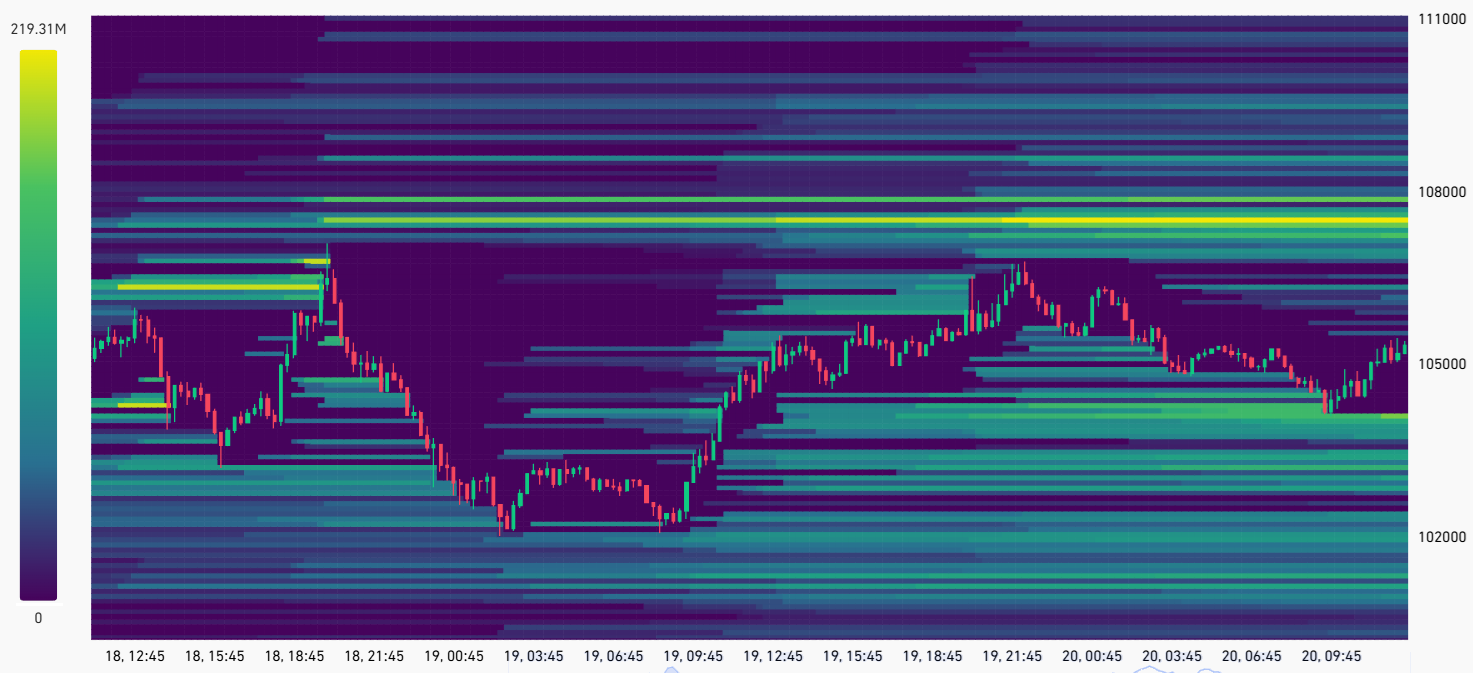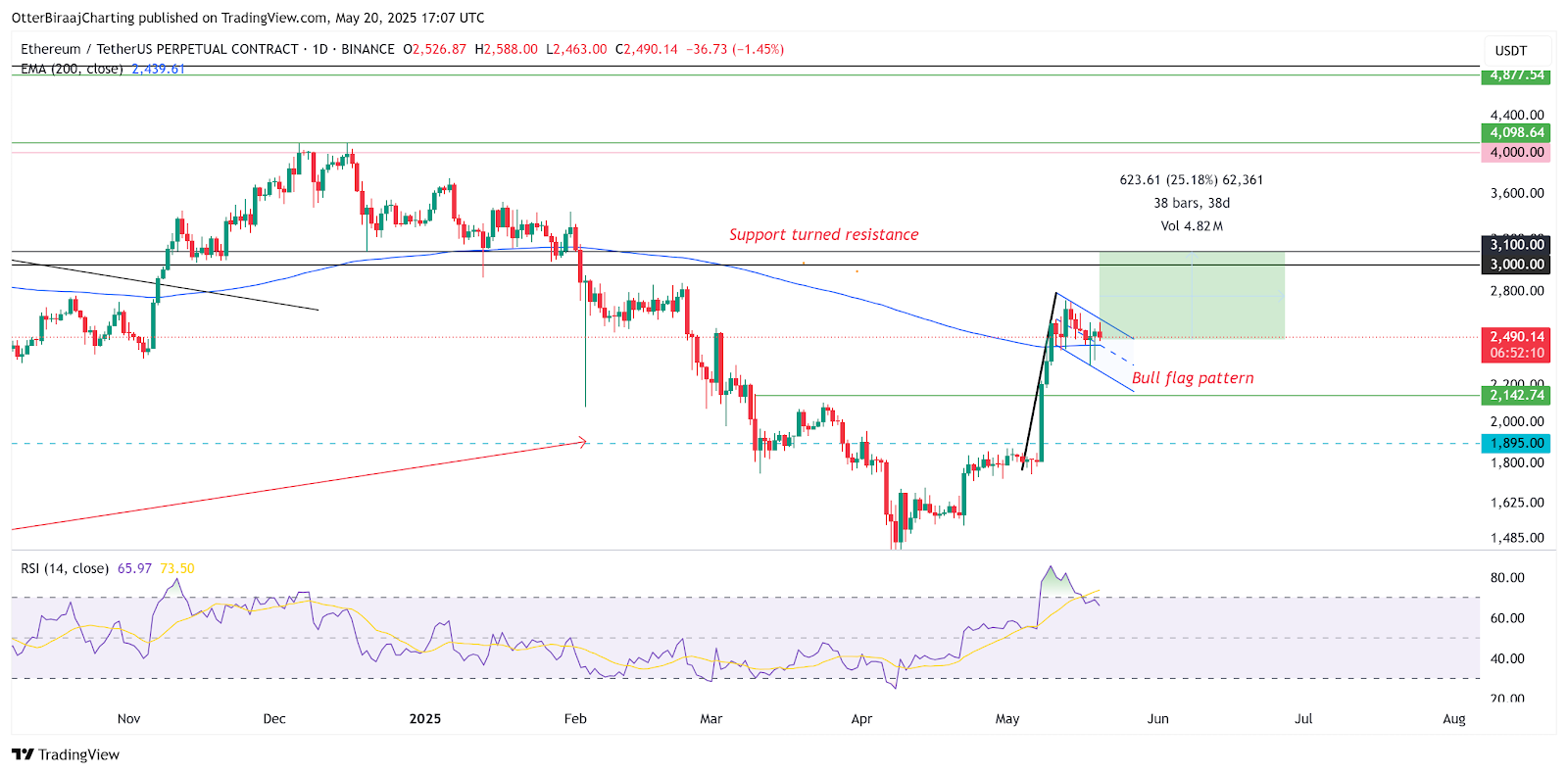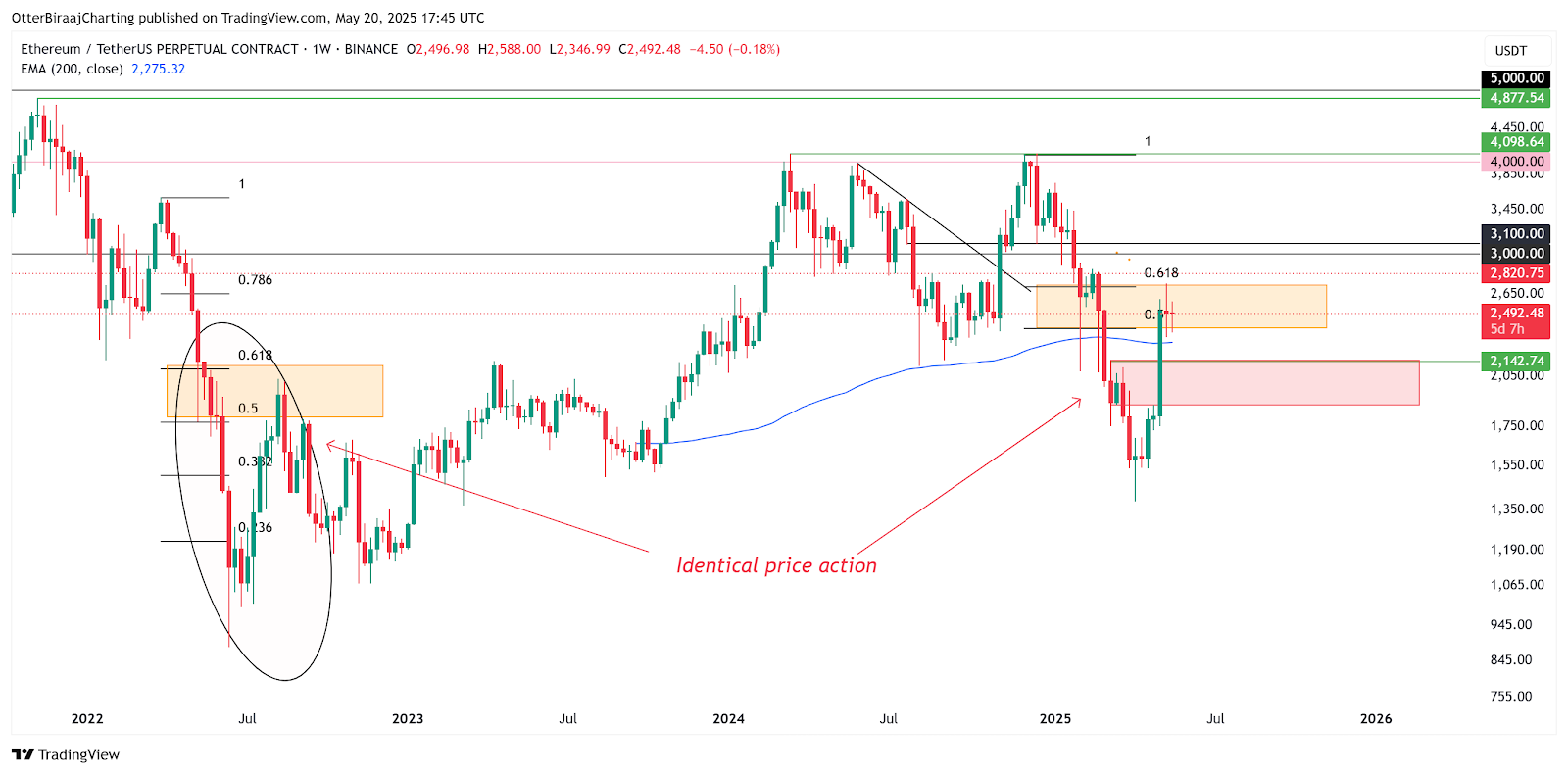Institutional Leverage and Liquidation Risk: BTC's Buildup Before Breakthrough
 Bitcoin Futures Total Open Interest (USD). Source: CoinGlass
Bitcoin Futures Total Open Interest (USD). Source: CoinGlass
On May 20, 2025, the total scale of Bitcoin futures open interest reached a historical peak of $72 billion, an 8% increase from $66.6 billion a week ago. This data not only sets a record in the cryptocurrency derivatives market but also reveals strong institutional confidence in BTC. From the position distribution, the Chicago Mercantile Exchange (CME) dominates with $16.9 billion in contracts, followed closely by Binance with $12 billion, showing the joint effort of traditional finance and native crypto platforms. This phenomenon echoes the market pattern when MicroStrategy massively bought Bitcoin in 2021, but the current depth and breadth of institutional participation are incomparable—MicroStrategy alone holds 57,600 bitcoins, with a market value exceeding $60 billion.
 Bitcoin Futures Leverage Heatmap, Unit: Million USD. Source: CoinGlass
Bitcoin Futures Leverage Heatmap, Unit: Million USD. Source: CoinGlass
The market focus is on the $1.2 billion short liquidation risk in the $107,000 to $108,000 price range. CoinGlass data shows that this price band has accumulated the largest leveraged short positions in crypto history, and breaking this threshold will trigger a chain reaction of forced liquidations. Notably, the structure of this liquidation heatmap is highly similar to the market characteristics when Bitcoin challenged $69,000 in 2021, when the liquidity squeeze from short liquidations drove prices up 35% in two months. The current macroeconomic environment further increases the possibility of a breakthrough: 20-year U.S. Treasury yields persistently hover around 5%, reflecting market concerns about the sustainability of U.S. government debt, and the Federal Reserve may be forced to intervene in the bond market to maintain stability, which will further weaken the U.S. dollar credit system and drive funds towards anti-inflationary assets like Bitcoin.
Gold and Bitcoin's Reserve Game
In the wave of global asset reallocation, Bitcoin is gradually eroding gold's safe-haven status. As of May 2025, gold's market value remains high at $22 trillion, but its 24% year-to-date gain shows fatigue, while Bitcoin's market value of $2.1 trillion is comparable to silver, becoming an unavoidable component of institutional portfolios. More symbolically, some U.S. lawmakers are discussing a proposal to convert 5% of gold reserves to Bitcoin—if implemented, this would bring in $105 billion in funds, enough to push Bitcoin's price past $120,000. Behind this evolving reserve structure is an important signal of sovereign-level recognition of Bitcoin's "digital gold" attributes.
From a market structure perspective, Bitcoin's institutionalization has entered a new phase. The CME futures contract design of 5 bitcoins per contract (about $514,000) naturally filters out retail investors, making changes in its open interest better reflect professional institutions' true movements. Currently, CME's open interest is 13% lower than its January price high, but Bitcoin's price has only fallen 5.8%, and this divergence suggests institutions are quietly building positions during the price pullback, accumulating energy for the next rally. This strategy resonates with Michael Saylor's "buy at any cost" enterprise-level Bitcoin strategy, jointly constructing a value consensus that counters short-term volatility.
Ethereum's Technical Breakthrough and Market Test
 Ethereum 1-Day Chart. Source: TradingView
Ethereum 1-Day Chart. Source: TradingView
While Bitcoin challenges its historical high, Ethereum also shows signs of breakthrough. On the daily chart, ETH's bullish flag formation in the $2,400 to $2,750 range is nearing its end, with the target pointing to the $3,000-$3,100 resistance zone.
If successful, the theoretical gain calculated by the flagpole height could reach $3,600, which would be another major market movement following the 93% surge in 2023. Technical indicators reinforce the bullish expectation: the golden cross of the 50-day and 200-day moving averages appears on the 12-hour chart, and while less reliable than the daily level, it still signals a strengthening medium-term trend.
 Ethereum Gaussian Channel Analysis. Source: Cointelegraph/TradingView
Ethereum Gaussian Channel Analysis. Source: Cointelegraph/TradingView
Gaussian channel analysis provides a deeper historical reference for Ethereum. After ETH price touched the channel's midline on May 20, the market closely watches whether it can replicate the legendary 1,820% gain of 2020—a similar breakthrough then triggered a comprehensive Altcoin explosion.
 Ethereum Weekly Price Analysis. Source: TradingView
Ethereum Weekly Price Analysis. Source: TradingView
However, trader XO's cautious attitude is worth noting: significant resistance exists below $2,800, and if not effectively broken in the coming weeks, ETH might be trapped in a $2,150-$2,750 range. This divergence is reflected in the Fibonacci retracement levels, where repeated tests of the 0.5 to 0.618 zone expose bulls' hesitation and suggest the market needs a stronger catalyst to break the balance.
Macroeconomic Variables and Market Sentiment Struggle
The fundamental force driving the cryptocurrency market always comes from the cracks in the traditional financial system. The U.S. government debt has exceeded $36.2 trillion, with irreconcilable differences between Democratic and Republican parties on fiscal policy—this political economic dilemma is transmitted to the crypto market through U.S. Treasury yield curves. When the 10-year Treasury yield climbs to a 14-month high of 4.79%, risk asset valuation models face severe challenges, but Bitcoin demonstrates unique resilience—its 42% annual gain has outperformed U.S. stocks, proving a structural separation between digital assets and traditional markets.
Regulatory environment changes are equally intriguing. Grayscale research points out that U.S. election candidates' attitudes towards cryptocurrencies may influence the medium to long-term market direction. Trump's team's policy probe allowing Bitcoin payments contrasts with Biden's government's focus on compliance regulation, injecting new uncertainty into the market. But the deeper trend is clear: regardless of who enters the White House, the reality of government debt/GDP ratio exceeding 150% cannot be reversed, and this continuous erosion of fiat currency credit will ultimately push more institutional investors into Bitcoin's embrace.







